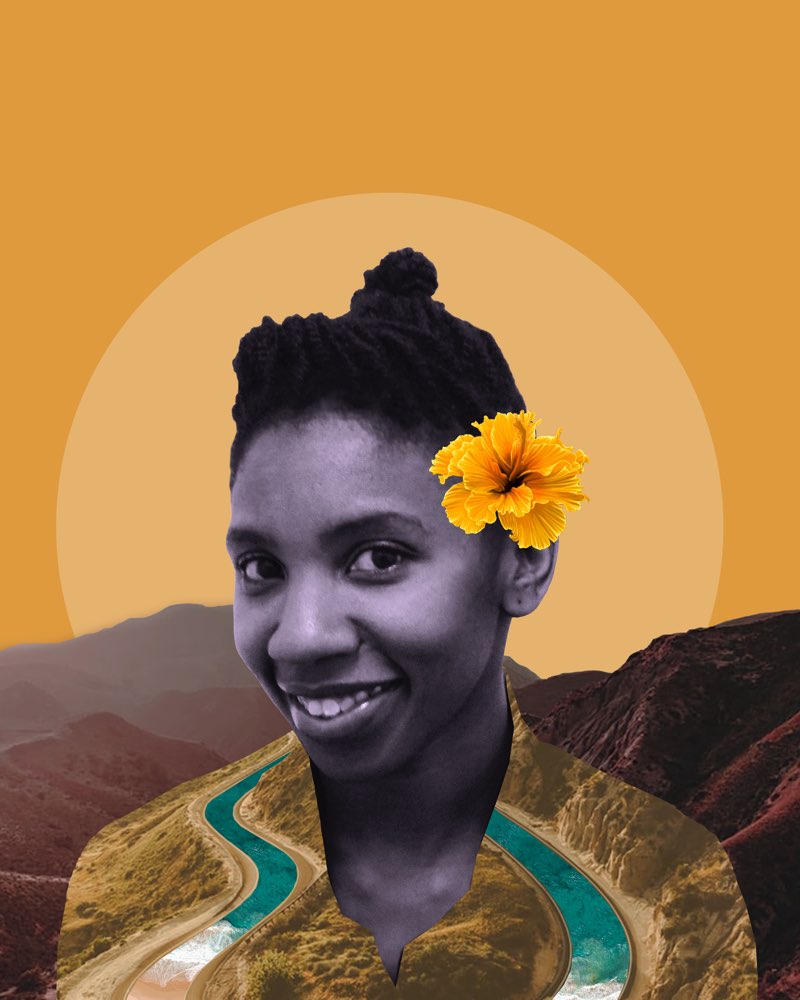
Rudo Chigudu
Being stewards of the land and living in reciprocity with the land is an act of defiance, an act of love. For African peoples, land is not merely about what food it can produce, but also about culture and connection to ancestry. It is about belonging, rootedness, and self-determination.
Those pink trousers
The journey of conducting interviews with farmers based in Ethiopia, Senegal, South Africa, and Zimbabwe, and putting the stories I was told into narrative form was a thoroughly humbling one. Moving from the home of one farmer to the next, I was met with generosity and kindness. I and the translators with whom I worked were allowed into the intimate space of the home, and more so into the intimacies of the minds and hearts of the incredible farmers who shared their stories. In moments it was necessary to fight back tears, as the stories tugged deeply at my heartstrings. In other moments I resisted the urge to jump up in jubilation as a longed-for happy ending emerged. The narrators’ experiences were varied in their social, cultural, political, and economic contexts, yet amazingly, many threads in their stories were similar. The force of the state and corporate power was clear, and along with it, the resistance of the farmers was evident.
In early conversations with Thousand Currents about documenting these oral narratives, I was excited about being part of a storytelling process. I am passionate about collating the stories of women, youth, and Indigenous farmers to celebrate Indigenous food systems. I am honoured to be a part of creating a humanising understanding of how farmers are building food sovereignty[1]. I imagined I would get to witness the telling of farmers’ stories and learn about the varied experiences had by farmers and forestry communities from quite different places. I had no idea that this journey would be about me as well, that it would take me back to my childhood, resurface old memories, ignite passion, trigger fury, and provoke in me new ways of thinking.
When I was growing up, my father seldom spoke of his torture and detention by the colonial regime during Zimbabwe’s struggle for independence. But when he did, his voice was unusually low and trembled slightly. He spoke of the injustices of colonialism and the importance of restoring access to viable agricultural land and restoring ownership of it to Zimbabweans. For many years I was consumed by rage. Its seeds were sown as I observed my father and heard stories of how my grandfather and others were killed during Zimbabwe’s independence struggle. The racialised and gendered social inequalities in the world around me served only to further fuel this rage.
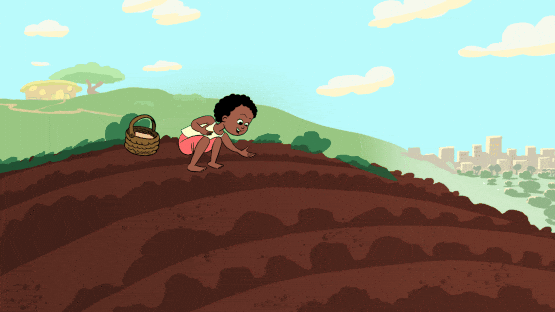
My father’s family had some land in our rural village. As a child, I spent school holidays working on that land — planting, weeding, or harvesting. I hated it, but my parents were inflexible about this holiday ritual. I remember the pair of pink trousers that I used to wear to the fields. Year after year they got shorter as I grew taller, but I continued to wear them until my mother made them disappear. When I think of my relationship with the land, I see my eight-year-old self in those pink trousers, dropping seed into the earth and covering it. In that act, I planted more than food. I was sowing the seeds of a lifelong love for the land that I did not realise at that time.
As I began the interviews for this series, I realised that conversations in mainstream media about farmers practising agroecology in African countries are quite divorced from the realities and experiences of these farmers. The stories told are often dismissive and dehumanising. Farmers are portrayed as a struggling minority that is a threat to the industrial agriculture’s progress in “feeding the world.” These farmers constitute the forces resisting “progress” by not participating in unnatural systems dependent on seed patents, chemical fertilisers, pesticides, and herbicides.
Being in the presence of these farmers — people who have turned rage into activism, their love into labour, their isolation into community, and their labour into liberation — deeply humbled me. Many farmers spoke of the freedom and economic independence that their farming provides in their lives and how this contributes to self-sufficiency. One of the farmers — Busisiwe Mgangxela, from the Eastern Cape of South Africa — boasted about how she does not need a supermarket for most foods because her family eats what she grows. Farmers shared how their farming is embedded deeply within familial relationships and their relationships with the land. I heard about the way farmer Worke Shumye’s children in Ethiopia have to bring her meals in the field because she cannot bear to leave until the work is done. It is about love — love of both family and land.
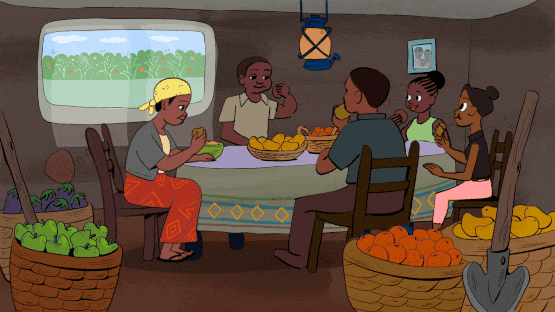
I listened as farmers described their farming practices as an ongoing experiment, as they are constantly learning what the land wants and gives, trying out new practices. In her story, Mariama Sonko, from Senegal, described devastating loss, giving up, and finding her way back to the land through a new farming practice, agroecology. I was particularly struck by South African Nosdima Sam’s story and how when her heart was most sore, she found deep peace and comfort, even joy, in the company of heads of cabbages and rows of spinach. Yet a concern was verbalised during my interview with Virginia Magwaca in Rabula, Keiskammahoek, South Africa. A worry arose. During our interview process, Virginia’s daughter, who was washing dishes outside, suddenly burst into song, prompting Virginia to speak of how disconnected the younger generations were becoming from the land and how they had to relearn the knowledge that was getting lost along the way. I was no different. I was here now, relearning the lessons of my parents and knowledge of the past.
Resisting exploitation and coercion
Immense attention is being paid to expanding models of industrial agriculture in Africa, which is aimed at increasing gross domestic product (GDP) and “feeding the world.” The narratives in this series demonstrate that small-scale farmers who practise agroecology already know how to sustainably produce adequate food for themselves and their communities, given the chance. However, the political and economic policies governing food systems and the subsequent funding flows are stacked against them[2]. Meanwhile, there is vast evidence that GDP growth does not reduce poverty. Instead it is often linked with unequal distribution of income and further wealth accumulation of the rich.
Land grabbing by corporations, which leaves communities with little or no land for agriculture or other resources such as water, and the increasing number of mining ventures and degradation of the environment have become the norm for too many African communities. In some instances, the global community silently watches and allows corporations and agribusinesses to monopolise markets, produce genetically modified organisms (GMOs) and patent seeds, and deny farmers freedom to save their own seeds.
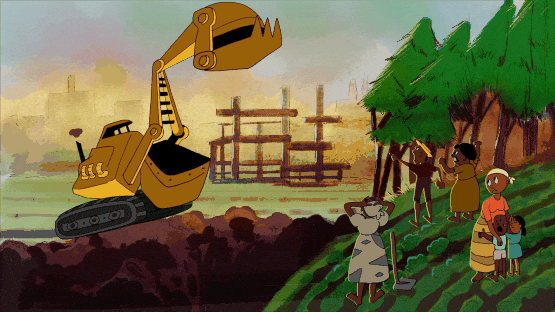
During the interviews, farmers in South Africa highlighted concerns over legislation they felt would threaten their farming practices. Unfortunately, these bills have since been signed into law. The Plant Breeders’ Rights Act of 2018 and the new Plant Improvement Act of 2018 prevent farmers from saving and sharing seed, two practices on which farming in Africa is heavily reliant[3]. Chuma Mgcoyi, sitting with me in the hills of Tamboerskloof in Cape Town, told stories about the different sources of the seed used in their community garden. For each seed there was a story of a chance encounter, an instant connection to a stranger at a food conference or a long journey across borders travelled by some seeds before they ended up in their garden. All of these sources have been rendered illegal by these new acts of parliament in South Africa.
In my view fertile ground for exploitation has been laid through already embedded governance systems set up in settler colonies. What Africans were denied in policy and law during settler colonialism is still being denied and regulated through systemic means of silencing voices and dissent; dismissing African knowledge; and continued alienation and exploitation of African peoples, lands, labour, and resources. What the farmers we meet in this series offer is a snapshot of how defiance, love, compassion, solidarity, creativity, and generosity disrupt the narrative of perpetual exploitation of and on the continent.
Pockets of African farmers are resisting exploitation and coercion into using industrial GMO seeds that are very costly, are biased towards monoculture farming, and have long-term negative health effects. They are escaping the debt trap that results from using patented seeds and chemical fertilisers that are given to them free of charge, or at a subsidised price, initially. After a year or two, the farmers themselves have to buy the seed and the chemical fertilisers the seeds are engineered to be dependent upon for growth.
These costs add up, as multinational companies usually have provisions that GMO seeds cannot be saved and reused, meaning that farmers who used to save and share indigenous seeds now have to buy seeds yearly. They often have to borrow money to do so, and eventually most farmers end up in a cycle of debt as they attempt to sustain their livelihoods through this “improved” farming method that, in the end, leaves them dependent on the products of multinational companies, rather than their own communities’ resources. Reverting to their Indigenous seeds becomes a challenge, as the soil has been leached by the fertilisers and chemicals required to grow GMO seeds.
In one of the narratives, Esnati Mutembedza sheds light on the confusion created in her community of Goromonzi in Zimbabwe by a commercialised organic food movement. While small-scale farmers are producing natural, agroecologically grown food, the absence of the “organic” label on their food gives it less market value. “Organic” labelling has been captured by capitalist logics and given a certification value that is inaccessible to most farmers.
Despite all of this, there are pockets of bold farmers resisting these systems and providing hope for the possibilities of growing food outside of the toxic frame of industrialised agriculture. These farmers do not paint a fairy-tale image of this process, but they do paint an inspiring one, citing challenges, celebrating successes, and sharing the peace and joy that come from self-determined livelihoods. The stories in this series cover a wide array of topics, but what they have in common is their relevance to ongoing debates about land distribution, food and seed sovereignty, climate justice, and economic justice on the continent and around the world. They cover a broad range of issues; the farmers’ lives, in whole or in part, provide information for better understanding the complex and reciprocal relationship between ourselves and the issues facing African farmers in general.
A political practice and a farming practice
In recent years, barely a day goes by without me coming across media debates or everyday conversation about land, seed, climate change, or healthy food production and the impact of this in Africa. It appears the loudest voices, however, are those of governments, industries, and corporations advocating for industrialised agriculture, which relies on chemical fertilisers, GMO seeds, and, more recently, new GM technologies[4]. In some ways this series serves as a response to these discussions by presenting stories of how farmers are visualising and affirming their knowledge, telling their own stories, and nurturing solidarity across communities.
As I listened to how agroecology has been championing healthy ways of relating to land, preserving the environment, and growing food — despite states’ and corporations’ attempts at marginalising agroecology as both a political practice and a set of sustainable farming practices — I was returned to my grandmother’s home. There was always a sheet somewhere with drying seeds on it. I was overwhelmed by the diverse Indigenous knowledge being used by the farmers I interviewed — knowledge about seed saving and preservation, ways of maintaining or restoring soil fertility, organic ways of controlling pests, growing plants together for their mutual benefit through sister-cropping as opposed to mono-cropping[5]. I found myself extremely emotional, retreating to silence and tears after some of the interviews, as I processed how the notion of industrial agriculture as the “pinnacle” of agricultural development is racist, erasing, and colonial, as well as patriarchal. Defining and pushing agriculture through industrial, profit-driven terms undermines the vast knowledge that has been used by African peoples, people like my grandparents and parents, to sustain themselves and the environment for hundreds of years. So, after I dried my tears, I couldn’t help but smile at the idea that through the stories of these farmers, light would be shed on these nuggets of Indigenous knowledge and wisdom.
At one point during the interviews, I remember staring into the eyes of Sithokozile Matafini in the Nezvuhwi region of Zimbabwe, captivated by her as she narrated her practice. There, as she sat with a twinkle in her eyes as though she were holding a treasure — in that moment — I felt a deep gratitude for the privilege of being able to hear this knowledge being shared. I was hearing these words spoken by a woman who had raised her children through working with the land. I watched the journey on her face as she carried me along the moments of disappointment, moments of deep pain, moments when rage consumed her, and finally when the land offered healing. I wondered how many other stories like this existed — held in the hearts and minds of women like Sithokozile — that would never see the light of day. Yet here I was, fortunate enough to be part of this process of amplifying farmers’ voices, lived experiences, and honed agroecological practices.
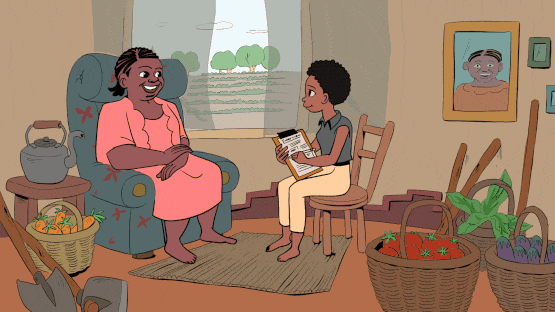
As I pulled the stories of the farmers together, I had a subtle realisation. I had been listening to stories that went far beyond the individuals sitting in front of me. These were not narratives of singular heroes nor stories that could be reduced and attributed to glorified nuclear families. Many of the narratives in this series reminded me that communities are still alive and that our lives continue to be built around and sustained by the collective efforts and support of community. Mutual support, collective action, and solidarity are part of the histories, cultures, and traditions of peoples on the continent. This series is a small offering to help affirm and illuminate not just strong Indigenous food systems and farmers, but stories of societies built and thriving on the collective efforts and solidarity of community — something I also first learnt about wearing those pink trousers.
- According to the Declaration of Nyéléni, at the first global Forum for Food Sovereignty in Mali in 2007: “Food sovereignty is the right of peoples to healthy and culturally appropriate food produced through ecologically sound and sustainable methods, and their right to define their own food and agriculture systems. It puts the aspirations and needs of those who produce, distribute and consume food at the heart of food systems and policies rather than the demands of markets and corporations.” For more see: https://nyeleni.org/spip.php?article290
- Peter M. Rosset and Maria Elena Martinez-Torres, “La Via Campesina and Agroecology,” https://viacampesina.org/en/wp-content/uploads/sites/2/2013/05/EN-12.pdf; GRAIN, “All Crises, THE Crisis (the Industrial Agri-food System Is Central to All of Them),” https://viacampesina.org/en/wp-content/uploads/sites/2/2013/05/EN-12.pdf;
- African Centre for Biodiversity, “South Africa’s New Seed and PVP Acts Undermine Farmers’ Rights and Entrench Corporate Capture, Control and Domination,” https://acbio.org.za/en/south-africas-new-seed-and-pvp-acts-undermine-farmers-rights-and-entrench-corporate-capture-control.
- African Centre for Biodiversity, “Two Simplified Briefings Introducing New GM Technologies and Biosafety Risks,” https://bit.ly/2VbUhfV.
- The sister-cropping approach involves taking plants that can benefit from each other and growing them together. The most common example of this uses corn, beans, and squash. They can be grown together on the same piece of land, as the corn provides a ladder for the bean vine to grow. And, together, the corn and the bean provide shade to the squash.
